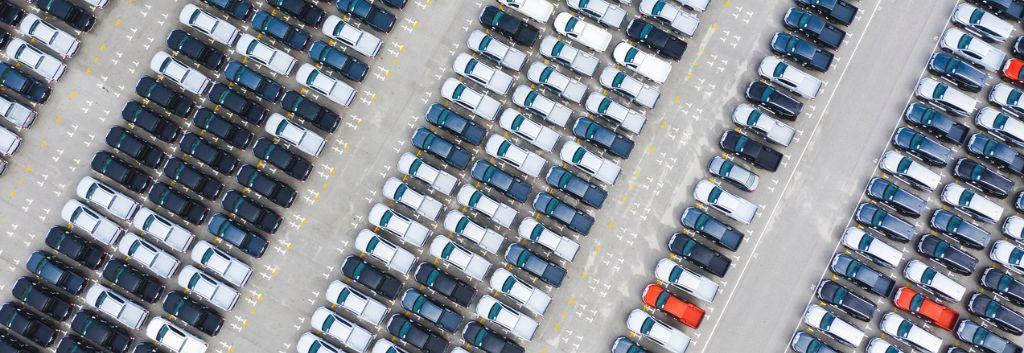
Human wave tactics movement of completed vehicles
After completing the final inspection on the production line, automobiles are transferred to a motor pool (also called a yard) to await shipment. In addition, unlike general consumer goods, a large area of land is required to wait for shipments and to secure inventory.
According to one estimate, about 1,300 vehicles are produced in Japan every day, and many automakers rely on human wave tactics to move vehicles from the final inspection site to the motor pool. is the current situation. In Japan, where the working population is declining, it is becoming difficult to secure drivers and transportation staff, so the use of automation technology is expected.
Infrastructure-coordinated vehicle movement solution
Recently, we have seen more TV commercials of cars with autonomous driving functions. In the future, we will be able to use this function to drive autonomously up to the yard. However, in that case, it would be necessary to install the software before shipping the product.
“Control Tower”, an infrastructure-enhanced vehicle movement solution provided by Seoul Robotics, greatly contributes to the automation of vehicle movement with drive-by-wire systems and V2X functions. Instead of installing special software just to move the vehicle to the yard, you will be able to utilize the vehicle's native functions to move the vehicle to the appropriate location. An appropriate number of LiDAR sensors are installed according to the size of the yard, and the control tower recognizes the empty space in the yard, generates an appropriate route to it, and gives instructions to the vehicle.
A vehicle with an autonomous driving function will be able to move automatically to a designated location according to this instruction. In addition, drivers are required to move vehicles that are not compatible with this system, but this sensor and algorithm will make it possible to efficiently manage the flow of people and vehicles. Many of the EV vehicles that will be released in the future will have communication functions, so as the ratio of EV vehicles increases, the contribution of this system will increase dramatically.
autonomous driving of driver transportation vehicles
Drivers generally transport vehicles from the final vehicle inspection site to the motor pool. According to an automobile manufacturer, this vehicle transportation distance is about 1km, and one driver moves 80-100 vehicles per day.
After moving the finished vehicle to the motor pool, the driver returns to the final vehicle proving ground to transport the next vehicle.
From the final inspection site to the motor pool, this vehicle dedicated to transportation performs "waiting for the driver", "moving", and "transporting the driver", and after the driver gets off, "returns empty" repeatedly.
Here, by introducing autonomous driving technology and autonomous driving the outward movement (to the motor pool) of the driver's dedicated vehicle, efficiency at the vehicle transportation site can be realized.
This system has already been evaluated and tested by a major automobile manufacturer, has entered the actual operation phase, and its effectiveness has been confirmed.
autonomous driving
Efficiency in component transportation is also an important issue in manufacturing plants. Various types of components are required to manufacture vehicles, and their weights and sizes vary. In particular, when handling heavy parts such as castings and iron plates, it is likely that a small tow vehicle and trolley will be used to move the building within the factory.
autonomous driving tractors are used to move heavy material handling.
NAVYA's autonomous driving towing tractors automatically transport containers loaded with cargo and baggage at airports, factories, and plants, contributing to labor savings, labor shortages, and cost improvements.
This autonomous driving towing tractor is equipped with NAVYA 's autonomous driving system in the electric tractor vehicle "AT135" of CHARLATTE MANUTENTION in France. The maximum speed in autonomous driving is 15km/h (maximum speed in manual operation is 25km/h), and the maximum weight can be towed up to 25t.
This service is currently undergoing verification work at an OEM factory in Europe.
Inquiry
If you have any questions about vehicle transportation solutions, please feel free to contact us here.
